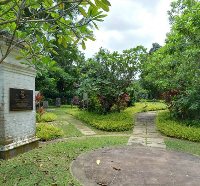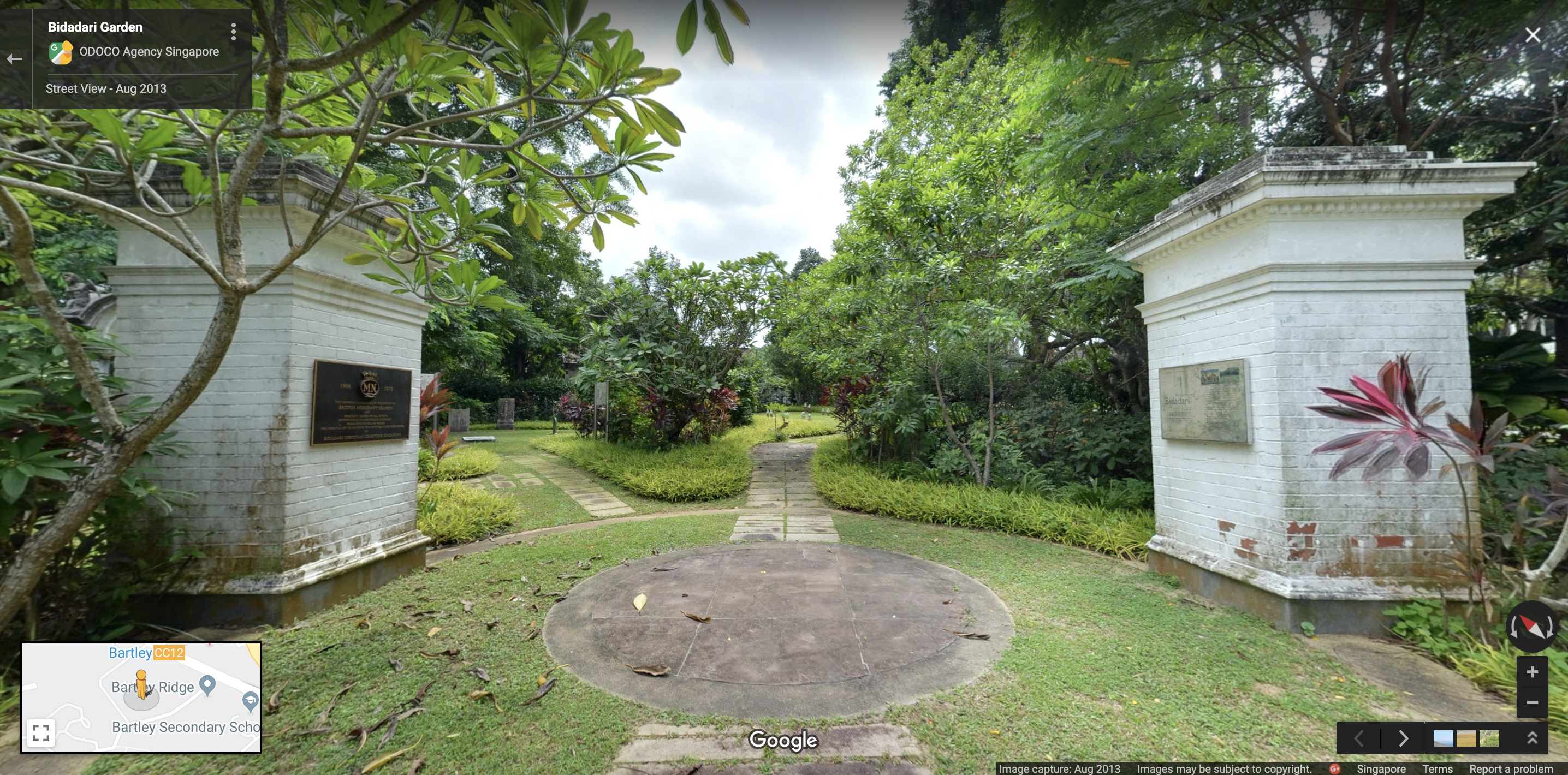Located along Mount Vernon Road, the original Bidadari Memorial Garden was developed in 2004 to commemorate the history of the Bidadari Cemetery, one of the oldest cemeteries in Singapore. The cemetery was located along Upper Serangoon Road, near the Woodleigh MRT station.
During the early 19th century, the area around Bidadari was first acquired by Europeans who hoped to transform the area into plantations. The area known as Bidadari obtained its name from a grand residence of the same name. The word “Bidadari” is Malay for “fairy” or “angel” or “nymph”.
The grand residence was built around 1855 to 1861 on the site which later became the Bidadari Cemetery. It was built by Mr Henry Minchin Simons, a businessman from the United Kingdom. The residence was later sold in the 1860s to Wan Abu Bakar bin Daing Ibrahim, who later became the Sultan of Johore. The Bidadari House was demolished in 1915.
In 1903, plans were made by the Municipal Government to develop a new Christian Cemetery at Bidadari, and 45 acres of land was acquired around the Bidadari Estate for this development. In 1905, the Municipal Government agreed to a proposal by the Muslim community for a Muslim burial ground at Bidadari, and acquired an additional 33-acre of land for the Muslim Cemetery.
Although the cemetery was originally slated to open in 1908, it was sufficiently developed to receive its first burial on 15 December 1907. The deceased was a well-known local personality, George Mildway Dare, who had been ailing for several years and expressed the hope that he could be buried at Bidadari. The cemetery was consecrated by Dr George Frederick Hose, Lord Bishop of Singapore, Labuan and Sarawak on 30 December 1907.
Bidadari Cemetery eventually had sections for Muslims, Hindus and Christians. Many prominent personalities were buried in Bidadari, such as Dr Lim Boon Keng (prominent Chinese community leader), Mr Ahmad Bin Ibrahim (Minister of Health and Minister of Labour), Mr Charles Joseph Pemberton Paglar (philanthropist and Eurasian community leader), etc. By the time the last burial was carried out at Bidadari in 1972, Bidadari had approximately 147,000 graves.
In 1996, the government announced that the site of the Bidadari Cemetery has been ear-marked for future housing developments. The exhumation of the graves began in 2002 and the site was opened as a temporary park space in 2006.
To commemorate the heritage of Bidadari Cemetery and our pioneers, the Bidadari Memorial Garden was developed, and 21 selected headstones and relics of personalities who were buried in the Bidadari Cemetery were relocated to the garden. It also included a memorial plaque that commemorates the British merchant seamen and merchant seamen of all nations, civilians and others buried at the former Bidadari Cemetery.
The old gates and gateposts of Bidadari Cemetery were also relocated and form the entrance to the memorial garden. The memorial garden comprised various sections to represent the Christian, Muslim and Hindu sections of the old cemetery, and serves as a reminder of Singapore’s heritage and the contributions of our forefathers.
HDB announced plans for the future Bidadari housing estate in August 2013 and since then, NHB has been working closely with HDB and NParks to relocate and integrate the memorial garden with the Bidadari Park in the estate.
NHB has been working with HDB to incorporate other heritage elements into the planning of the Bidadari housing estate. These commemorative initiatives are part of NHB’s efforts to foster place identity and community belonging.
A project by National Heritage Board in partnership with ODOCO Agency.
Announcement
The original Bidadari Memorial Garden is closed from 10 June 2019. The garden will be relocated to the east of Sang Nila Utama Road and integrated into the Bidadari Park nearby. Works are underway to ensure the artefacts and structures from the original memorial garden are sensitively integrated into the new site. We apologise for any inconvenience.








